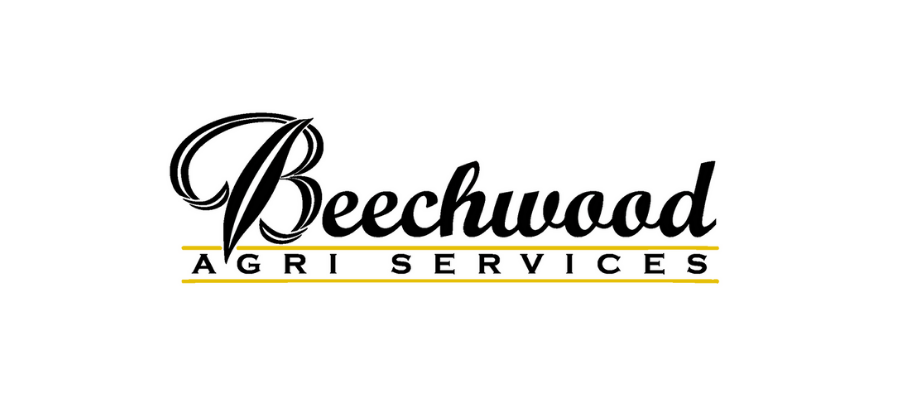Introduction
Nationally, field crops account for roughly 35% of organic farmland in Canada, while forages and pasture account for approximately 62% of organic farmland. In 2018, Ontario ranked fourth among the provinces for total organic field crop area with about 7% (Canada Organic Trade Association, 2019).
In the 2016 Census of Agriculture, field crops made up approximately 78% of all Ontario cropland. Organic field crops account for approximately 1% of all field crops grown in Ontario. The three largest field crops grown in Ontario, both organic and non-organic, are soybeans, corn, and winter wheat. This report will provide an overview of the organic field crop sector, including acreage, yield, and pricing data.
Distribution of Organic Nationally, 2018
The Canadian organic sector has been growing steadily as demand for organic products continues to rise. Nationally, organic operations and acreage represent approximately 3.2% of cropland and 2.2% of farms, as measured by the 2016 Census of Agriculture.
Operators
Ontario represents approximately 20% of certified organic operations in Canada, second behind Quebec (38%). The 2018 Canada Organic Trade Association By The Numbers found that Ontario represents 16.5% of certified organic crop producers (which includes farms producing grains, fruits, vegetables and wild collection) and 32% of livestock producers. Ontario (528) and Quebec (536) have the most certified organic processors in the country.
Acreage
The Prairie provinces hold the largest share of organic acreage in Canada, led by Saskatchewan (1.15 million acres). Ontario ranks fifth out of the provinces for share of organic acreage, with about 5% of total organic acreage. Comparatively, Ontario represents approximately 10% of all of Canada’s cropland.
Ontario Organic Overview
Ontario Organic Farms
In the 2016 Census of Agriculture, 854 farms reported selling organic or transitional products. Of the farms reporting organic product sales, 222 were classified as producing primarily grains and oilseeds, making up roughly 1.3% of all Ontario grain and oilseed farms. Roughly 26% percent of organic farms in Ontario are producing field crops as their predominant type of production, compared to 36% of non-organic farms.
Ontario Organic Acreage
Ontario’s organic acreage in 2018 was approximately 161,970 acres, up from 160,700 in 2017. Nationally, field crops make up approximately 35% of Canadian organic acreage, but in Ontario, field crops make up approximately 52.6% of Ontario organic acreage. Field crops make up approximately 78% of all Ontario cropland (2016 Census of Agriculture), and organic field crops account for approximately 1% of all field crops grown in Ontario.
Field Crop Acreage by Province, 2018
In 2018, Ontario ranked fourth among the provinces for total organic field crop area after Saskatchewan (616,700 acres), Alberta (295,900 acres) and Quebec (91,705 acres)(Canada Organic Trade Association, 2018). Ontario’s field crop production made up approximately 7.6% of Canadian organic field crop acreage in 2018.
Provincial Share of Canada’s Organic and Non-Organic Field Crop Acreage by Province
For further context, Statistics Canada collects total field crop acreage in their Field Crop Reporting Series. The following chart compares data from the Statistics Canada Field Crop Survey with organic acreage data collected by the Canada Organic Trade Association. Please note that this chart represents data from two different sources and collection methods. However, in the absence of a unified collection method of both organic and non-organic data, this is the best available way to show organic as a share of total field crop acreage.
In 2018, Saskatchewan led all provinces with 53% of organic field crop acreage, and 44% of non-organic field crop acreage. Ontario ranks fourth of all provinces, with 7% of organic field crops acreage, and 9% of non-organic field crops. Manitoba ranks third in terms of non-organic field crop acreage with 12%, but they rank fifth in terms of organic acreage with 4%. In contrast, Quebec ranks third in terms of organic field crop acreage with 8%, and fifth in terms of non-organic field crop acreage with 5%.
Historical Field Crop Acreage by Province
Historically, Ontario has ranked third in organic field crop acreage behind Saskatchewan and Alberta. Since 2013, Ontario’s organic field crop acreage has grown by approximately 6%, while Quebec’s has grown by 65% in the same time period. In 2018, Quebec overtook Ontario’s organic field crop production by about 6,500 acres. Alberta has experienced 165% growth in organic field crop acreage since 2013, the most of all provinces. Between 2014 and 2018, there was a 47% increase in the number of acres of organic field crops in the Canadian Prairies, likely due in part to the work of the Prairie Organic Grain Initiative, a transition program that supported many operators in transitioning to organic.
Ontario Organic Field Crops Acreage
Since 2003, Ontario’s organic field crop acreage has grown by 55%. Growth has been gradual and steady for the most part. The increase in organic acreage between 2009-2010 coincides with the Canada Organic Regime coming into effect. The decline in field crop acreage in 2014 might be attributable to a change in the way the acreage data was collected.
Detailed Field Crops Acreage
The following detailed field crop acreage chart was developed by the Organic Council of Ontario using aggregated organic acreage data from the certifying bodies, including Ecocert, Pro-Cert, CSI and OCIA.
In 2020, over 98,700 acres of organic field crops were grown in Ontario, representing roughly half of Ontario organic acreage. Organic field crops made up just under 1% of total field crop acreage in Ontario in 2018. Grains and Cereals made up the largest percentage of Ontario organic field crops (63%), followed by Oilseeds (33%) and Pulses (4%).
Grains and Cereals
Grains and cereals represented 63% of Ontario’s organic field crop acreage in 2020. Corn is the second most abundant crop in Ontario, making up 27% of Ontario organic, followed by wheat at 13%. Mixed cereals, sometimes also called mixed grain, includes any combination of two or more of oats, barley, wheat, peas and triticale. There is quite a bit of variation in how this category is recorded, which is likely because mixed grains can be used for more than one purpose. Specialty grains include amaranth, buckwheat, spelt, triticale, millet, kamut and quinoa (not all of which are grown every year in Ontario).
Oilseeds
Oilseeds represented approximately 33% of the Ontario organic field crop acreage in 2018, with over 97% of this covered by organic soybeans, followed by sunflowers (1.1% of all field crops) and canola and rapeseed (1% of all field crops). Soybeans are the largest organic crop grown in Ontario, with approximately 31,451 acres grown in 2020. Other oilseeds include mustard, flax and camelina.
Pulses
Pulses only make up just over 4% of Ontario acreage, with black turtle beans at roughly 2.2%, follwed by peas at 1.7%. The Prairies produce 97% of all organic pulses grown in Canada (Prairie Organic Grain Initiative, 2019). Peas include field peas, dried peas, dry yellow peas, dry green peas, marrowfat peas, and Austrian winter peas. Other edible beans (sometimes called field beans) include adzuki, kidney beans, pinto, cranberry, white beans (Navy) and white kidney beans.
Organic Field Crop Yields
The following average yield data has been collected by Agricorp from the Ontario organic crop insurance programs for organic soybeans, winter wheat, corn, and spelt. Average yields are based on the fully reported yields of the growers who have registered for those programs, and do not represent the average yields for all organic producers in Ontario.
In 2020, the Effective Acres covered by the Agricorp organic crop insurance programs represented approximately:
- 59.9% of organic soybean acres in Ontario
- 40.6% of organic winter wheat acres in Ontario
- 49.6% of organic corn acres in Ontario
Effective Acres are those which producers pay premium on and may differ from insured acres.
Weighted Average Farm Yield (AFY) is the average farm yield based on a 5 to 10-year yield history of growers in the insurance plan. It represents a good benchmark to determine if production is above or below average over time.
Over the last 10 year period, organic soybean yields have on average represented 68% of conventional soybean yields. In 2018, soybean yields were higher than the 10-year average across the province, aided by a dry June and July in most areas followed by rain in August. Organic soybean yields in 2018 were 110% of the 10-year average farm yield.
The organic corn crop insurance plan came into effect in 2011. Since then, organic corn yields have on average represented 59% of conventional corn yields. In 2018, corn yields were higher than the 10-year average across the province, in spite of the difficulties some farmers faced due to DON. Organic corn yields in 2018 were 114% of the 10-year average farm yield.
Over the last 10 year period, organic winter wheat yields have on average represented 59% of conventional wheat yields. In 2018, winter wheat yields were comparable to the 10-year average yields, for both organic and conventional.
Yield data for 2018 and 2019 is suppressed for operator privacy. There is no conventional spelt insurance plan, hence no conventional yields for comparison.
Organic Field Crops Pricing Data
The following pricing data has been collected by OrganicBiz from Ontario grain buyers on a monthly basis. Where available, prices are listed with a high, low, and average. Data points were not available for all months or at regular intervals. This is currently a free service provided by OrganicBiz. Average organic price premiums are shown per crop for the past three months of most recent data. In spite of lower yields, organic prices tend to be double if not triple the conventional prices.
Note: In September 2021 OrganicBiz combined pricing information for Soybeans (Feed) and Soybeans (Food). We have kept the two separate for historical analysis.
Source Notes and Methodology
Please visit our source notes page for more information about the data sources used in this report.
Acknowledgements
The Organic Council of Ontario would like to gratefully acknowledge the support of the following organizations who have made this pilot Grain and Oilseed Report possible:
Thank you to all those who gave their time and insight to this project, including but not limited to: Robert Wallbridge, Hugh Martin, Joel Aitken, Andrew St. Jean, Geoff Smith, Laura Telford, and Norm Hansen.
We would also like to thank the organic certification bodies who provided acreage and operator data used in this analysis: Ecocert Canada, Pro-Cert Organic, OCIA, and CSI.
This project was funded in part through the Canadian Agricultural Partnership (the Partnership), a federal-provincial-territorial initiative.


